What's New
Displaying results 2971 - 2980 of 4922
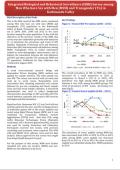
Resource | Fact Sheets,
This is the fifth round of the IBBS survey conducted among men who have sex with men (MSM) and transgender (TG) population in the Kathmandu Valley of Nepal. Previously, the survey was carried out in 2004, 2007, 2009 and 2012 in the same location among the same population. In line with the objectives of the previous rounds of the IBBS, this survey was also undertaken primarily with objectives to:
- Determine the prevalence and trend of HIV Syphilis, Chlamydia Trachomati (CT) and Neisseria Gonorrhea (NG) and associated risk behaviors among MSM/ Transgender (TG),
- Collect information related to socio-demographic characteristics
- Explore the association between the risk behaviors and HIV and other specific STIs among the MSM and TG population.

Resource | Presentations,
The objectives of the presentation are as followed
To estimate HIV prevalence in two sentinel groups: women attending ANC clinics and MSM
To compare the HIV prevalence in the routine PMTCT program and the ANC sentinel surveillance
To provide data needed for estimating HIV infection in the general population, trend analysis, monitoring, and program planning
To conduct a population size estimation for men who have sex with men
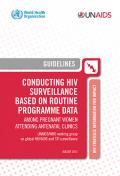
Resource | Guidelines,
This document is written for national HIV surveillance programme staff responsible for monitoring trends in country HIV epidemics. Its purpose is to describe how routine prevention of mother-to-child transmission of HIV (PMTCT) programme data can be used to conduct HIV surveillance among pregnant women attending antenatal clinics (ANC).
These guidelines assume that surveillance programmes have already assessed the readiness of routine programme data to be used for surveillance. WHO’s 2013 Guidelines for assessing the utility of prevention of mother-to-child transmission (PMTCT) programme data for HIV sentinel surveillance among pregnant women describes these assessment methods.
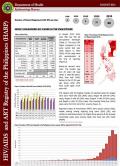
Resource | Fact Sheets,
In August 2015, there were 598 new HIV Ab sero-positive individuals. This was 17% higher compared to the same period last year (509). Most (93%) of the cases were still asymptomatic at the time of reporting.
Ninety-six percent were male. The median age was 28 years old (age range: 2 years-66 years). More than half (53%) belong to the 25-34 year age group while 26% were youth aged 15-24 years old.
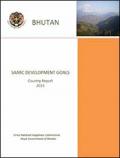
Resource | Publications,
Poverty reduction has always been an important objective of Bhutan’s development policies and plans. Bhutan adopted poverty reduction as the overall objective of the 10th Five-Year Plan (2008-2013). The commitment to reduce poverty has continued into the 11th Five Plan (11th FYP, 2013-2018).
Proportion of population living under poverty line was reduced to 12% in 2012 from 23.2 percent in 2007. About 95% percent of the poor population lived in rural areas. Among the extremely poor, 97% of them live in rural areas. Therefore, poverty in Bhutan continues to be a rural phenomenon.

Resource | Presentations,
The primary objectives of the presentation is to estimate the size of MSM population in Cambodia. The second objectives is identify risky sexual behaviors among MSM, to assess accessibility to HIV prevention, care, and support services among MSM and to assess HIV and AIDS intervention coverage.
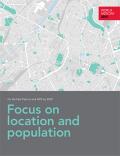
Resource | Publications,
Within the pages of this World AIDS Day report, Focus on location and population, are more than 50 examples of how countries are getting on the Fast-Track. It shows how governments are working with community groups and international partners to scale up health and social services that put people at the centre and located where they can do more people more good. These examples show us that ending the AIDS epidemic is achievable if we focus on people accessing the right services delivered in the right place. This report also contains nearly 100 maps that display an unprecedented amount of subnational data generated and reported by national HIV programmes.

Resource | Publications,
In 2014, Youth LEAD strengthened YKP advocacy on major issues including: legal barriers, the National Strategic Plan, Policies and Guidelines on the HIV Response, the Global Fund funding model, sexual and reproductive health and rights, the Post 2015 development goals, as well as youth friendly testing and treatment at national levels.
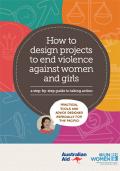
Resource | Tools,
This Toolkit brings together information, resources and practical activities to help Pacific Islanders apply a gendered analysis to the issue of violence against women and to design and implement effective and sustainable projects. It can be used for new projects or to integrate a gender analysis and human rights based approach to existing projects aiming to end violence against women.
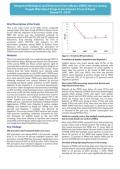
Resource | Fact Sheets,
This is the sixth round of the IBBS survey conducted among People Who Inject Drugs (PWID) in Eastern Terai. In line with the objectives of the previous rounds of the IBBS, this survey was also undertaken primarily to determine trends of HIV and STIs, HIV and STI related risk behaviours, drug injecting behaviours, the level of awareness about HIV/STIs and exposure to HIV intervention programs among PWID in Eastern Terai. Moreover, this survey examined the prevalence of Hepatitis B and Hepatitis C among PWID for the first time. Fieldwork for data collection was conducted in July 2015.





